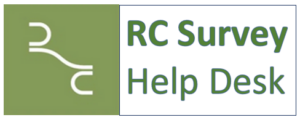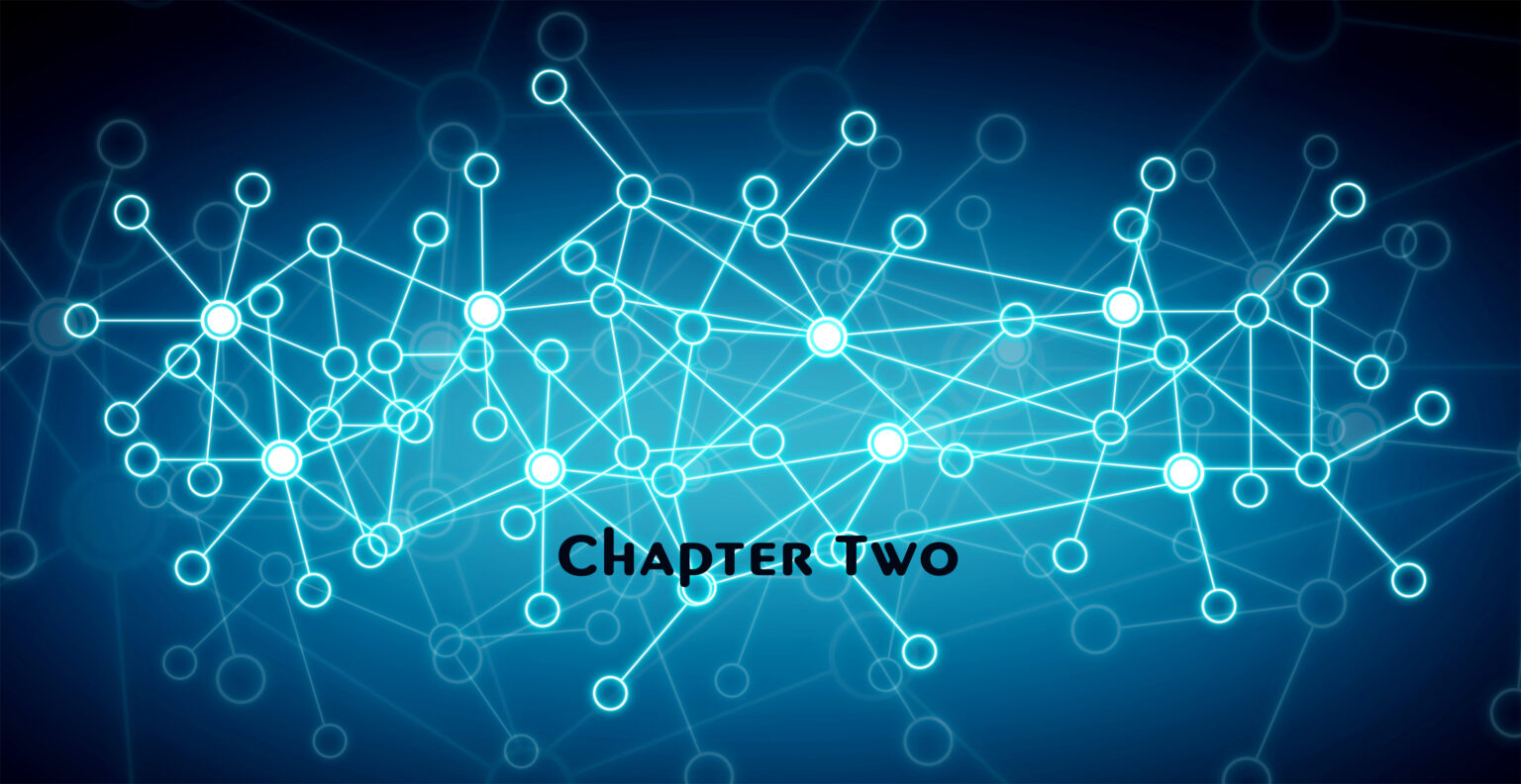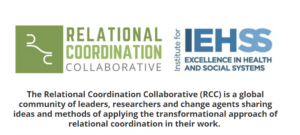

From People Analytics to Relational Analytics
We are living in the midst of a revolution in people analytics, where data are used to identify and leverage human talent to drive performance. This revolution has occurred in response to a growing desire for evidence-based management (Barends & Rousseau, 2018; Rousseau, 2012), and a desire for new ways to achieve control over the human resources that are critical to every organization’s success. But in today’s complex world, there is little that individuals can achieve on their own. On the horizon is the next phase of the analytics revolution––relational analytics––that goes beyond a focus on individuals to focus on the relationships between them where value can be either created or depleted.
In this book, we provide researchers, leaders, and consultants with a research-based, practice-tested methodology for doing relational analytics, based on the science of relational coordination. We share relational coordination theory and the validated measurement and analytic tools that have been used in dozens of countries and industries to assess, understand, and shape relational networks within and across organizations. The aim of this book is to help readers to create positive change by using relational analytics to identify and build high-quality networks across functional, departmental, organizational, and sectoral boundaries.
The Theory of Relational Coordination
When coordination is carried out through frequent, high-quality communication supported by relationships of shared goals, shared knowledge, and mutual respect, organizations can better achieve desired outcomes for their multiple stakeholders. Relational coordination is expected to be particularly important for achieving desired performance outcomes under conditions of task interdependence, uncertainty, and time constraints. Relational coordination has recently evolved from a theory of performance into a theory of change, resulting in a more dynamic model called the Relational Model of Organizational Change. Chapter 2 introduces relational coordination as a theory and a set of analytic methods for understanding the relational dynamics of coordinating work within and between organizations, and for understanding how organizations shape these dynamics.


Evidence About the Outcomes and Predictors of Relational Coordination
Relational coordination theory has been tested in 73 industry contexts and in 36 countries around the world. In Chapter 3, we assess the empirical research supporting relational coordination theory to date and recommend a future research and practice agenda, we conducted a systematic review following Preferred Reporting Items for Systematic Reviews and Meta-Analyses (PRISMA) guidelines. Findings regarding the outcomes of relational coordination were grouped into four categories based on the theory, including quality and safety outcomes, efficiency and financial outcomes, worker outcomes, and learning and innovation. Findings regarding the predictors of relational coordination were grouped into selection and training for teamwork, relational job design, relational leadership roles, boundary spanner roles, shared accountability and rewards, conflict resolution, shared meetings, shared space, shared protocols and routines, shared information systems, as well as relational and work process interventions.
Choosing a Research/Evaluation Design to Answer Your Questions
Now that we have reviewed hundreds of findings about how relational coordination drives outcomes and how organizations strengthen it, it is time to ask your own questions. You may want to know how strong relational coordination is in your organization, or how it varies across different parts of your organization, or how it varies across different organizations in your industry, as in the study of flight departures in The Southwest Airlines Way and the study of hospitals in High-Performance Healthcare. To get even more practical, you may want to know whether and how strongly relational coordination influences the outcomes that matter for succeeding in your industry given your organization’s strategy. And if relational coordination does influence outcomes that matter in your industry given your organization’s strategy, you may want to assess which interventions succeed in strengthening it.
Regardless of your question, you will need a research/evaluation design to answer it. In this chapter we help you to think through the questions you are trying to answer, then help you to create a design that can answer those questions


Measuring Relational Coordination
In this chapter, we outline methods for measuring relational coordination, including the setup of your survey and the collection of your data. In addition to outlining the most common methods for measuring relational coordination, we also share some important variations––for example, measuring relational coordination around individual clients, measuring relational coordination in multistage work processes, and measuring relational coordination in cross-organizational work processes. We also show how to measure relational leadership between staff and their leaders, and how to measure relational coproduction between staff and their clients.
Before you measure relational coordination, permission must be obtained from Brandeis University through a brief process. You may also work with survey providers licensed by Brandeis University. These providers offer support for setting up the Relational Coordination Survey, algorithms for conducting preliminary descriptive analyses of the data, and reports that include visualizations of the data for the purpose of sharing results with key stakeholders.
Constructing Relational Coordination Variables
Once you’ve collected your relational coordination data, the next step is to create your variables. In this chapter, you will learn to create variables for each of the seven dimensions of relational coordination. You’ll learn how to use factor analysis and Cronbach’s alpha to assess whether those seven dimensions form a single construct called the RC Index, or two separate constructs called RC Relationships and RC Communication. Next you will learn how to separate out relational coordination within roles, from relational coordination between roles. You’ll also learn how to use proportional weighting to account for missing data, and how to create relational coordination as a categorical variable instead of a continuous variable, if needed. The statistical codes and video tutorials that support this chapter are accessible through rcsurveyhelp.info.


Visualizing and Analyzing Relational Coordination Data with Matrices and Networks
Because relational coordination is a network measure, matrices and networks can be used to visualize the strength of communication and relationships between roles. Visualizing your relational coordination variables in this way can be highly useful for helping participants to better understand the characteristics of the network in which they are working. These visualizations can also inform the design of interventions, by illustrating which roles are already connected by high levels of relational coordination, and which are not. These visualizations can also be useful for developing testable hypotheses about which management practices are responsible for strengthening or weakening coordination between specific roles, and whether weak coordination between specific roles may be preventing the achievement of desired outcomes. For example, in the study “Is the Doctor In?” the researchers were able to see from the matrix shown in Chapter 5 that patients whose physician was employed as a hospitalist benefited from stronger relational coordination between the physician and nonphysician members of their care team. The researchers were then able to test the hypothesis that the new hospitalist job design was responsible for stronger relational coordination as well as for higher quality and lower cost patient care outcomes. Ultimately, repeating the measurement over multiple time points will reveal the effect of implemented managerial practices and further validate those hypotheses.
Measuring the Organizational Structures That Shape Relational Coordination
Now that we have measured relational coordination, constructed variables, visualized, and analyzed our data for the groups, organizations, or communities we are working with, many people are likely to be curious about why these patterns exist. We know that organizational structures play a powerful role in shaping relational coordination, for better or worse, as described in relational coordination theory, as demonstrated in our review of the evidence. These organizational structures include human resource practices and coordination mechanisms. They may or may not be easily changed due to leadership resistance, regulatory restrictions, costliness, or simply the lack of time to invest in the process. But in reality these organizational structures have been created by people and they can be re-created by people. To lay the groundwork for possible changes, how do we assess the current state of these organizational structures to see how well they support relational coordination––or not?


Analyzing the Outcomes and Predictors of Relational Coordination
You have learned how to measure relational coordination, and the organizational structures that tend to shape relational coordination for better or worse. You are now ready to analyze the outcomes of relational coordination that matter to your key stakeholders, and the organizational structures that predict relational coordination in your context. In this chapter, we introduce various ways to analyze your relational coordination data. Specifically, we walk you through the process of testing for differences across sites and over time, analyzing both the outcomes and predictors of relational coordination, and analyzing the mediators and moderators of relational coordination. At rcsurveyhelp.info you will find the commands to conduct each of these analyses, along with sample data sets to practice carrying out these analyses.
Leveraging Relational Analytics to Create Positive Change
In the years since relational coordination was first discovered, the most significant evolution we have seen is the growing interest in using it to create positive change. As people have learned about the beneficial outcomes of relational coordination, including enhanced well-being for co-workers and the clients they serve, they have become more and more interested in finding ways to strengthen it in their own organizations. This interest led to the creation of a community of researchers and practitioners––the Relational Coordination Collaborative––that works together to “transform relationships for high performance.” In this chapter, we introduce the Six Stages of Change, inspired by scholar practitioner Tony Suchman, to show how the Relational Model of Organizational Change works in practice. See Exhibit 10.1 for the Six Stages of Change.


Moving Forward with Research and Action
We are grateful that you have joined us on this journey into the expanding world of relational analytics. Relational analytics share in common with people analytics the use of algorithms to understand and shape human behavior. Beyond that, however, relational analytics are quite different given their focus on managing interdependence rather than controlling individual behavior. Analytics are clearly not neutral. They can give power or take power away. They can shape behavior by shaping how we see ourselves in relationship to our work and in relationship to each other.

